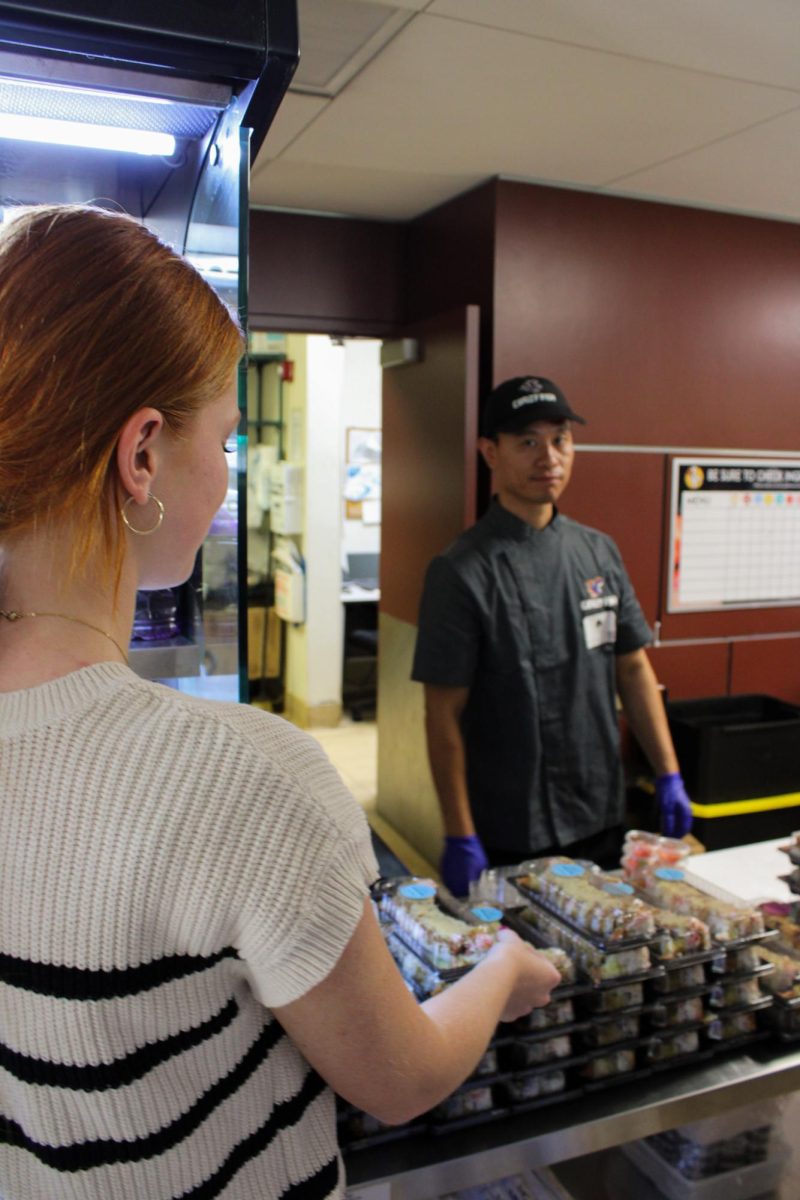
Kendamas are the latest craze at Trinity that have sprung up from the heels of water bottle flipping, and they are reminiscent of the Silly Bandz fad of 2010. So, are Kendamas short-lived, or are they here to stay on the Trinity campus?
Over the summer, sophomore Philip Clarke travelled to Japan and brought back his interest for Kendamas. Later, he took several Kendamas with him to school, and the sophomore class became fascinated with his toy.
A Kendama is a traditional Japanese toy that dates back to the 1700s. It is comprised of a wooden, mallet-sized object with concave cups on the heads and a base and one spike on top. The cups fit the diameter of a small ball, which is attached by a piece of string. The object of the game is to catch the ball in as many different locations as possible, with skill increasing as the complexity of the trick advances.
“Not all Kendamas are created equal. They come in various shapes and sizes,” sophomore Spencer Newman said. “However, the typical size of the cup is around 7-inches, and the ball can come in a variety of different colors and sizes based on the user’s preference.”
The Kendama appeals to a wide audience from martial art trainers to devoted connoisseurs. Using a Kendama requires excellent hand-eye coordination since it has connections to juggling and using a yo-yo.
Sophomore Liam Loftus’s longing for his Kendama is so great that he yearns for its presence wherever he goes. He tries to perfect his technique while in class or in the library. However, trouble arises when his Kendama interferes with others.
“The library has confiscated a collection of Kendamas, and I feel the ban on them should be lifted,” Loftus said. “It’s a disgrace we can’t follow our passions. All paths of learning and ways of life should be accepted in such a vast place of knowledge. I know many individuals say that it could be used as a weapon, but I have only seen it bring love and joy into people’s lives.”
Library Clerk Margaret Griffith claims that Kendamas can distract individuals from studying.
“The library is not a jungle gym, and the Kendamas have the potential of hurting someone in close quarters,” Griffith said. “If they want to go practice, they can always do it outside.”
Kendamas range in prices based on the quality and craftsmanship of the toy and different online stores contain an assortment of Kendamas.
“Kendama USA is the ideal place for a beginner to buy their first Kendama.” Loftus said. “However, my friend, Philip Clarke loaned me one since he had acquired a large amount. Online Kendamas can from around from $15-200.”
Loftus practices for several hours a day and is devoted to studying the art of his Kendama.
“Using a Kendama requires lots of patience and timing in the beginning,” Loftus said. “However, once you get the hang of using it, you become entranced by its presence. [Newman and I] Kendama 24-hours a day. We don’t even stop for the name of the game. At the end of the day, practice makes perfect and if you don’t you won’t be a professional Kendamist like myself and Spencer Newman.”
Kendama competitions take place all across campus. Students congregate in secretive places, including the library to battle each other.
“Kendama competitions are similar to the game HORSE in basketball,” Newman said. “Each person has to match the trick that the other has performed.”
The debate still continues whether the Kendama can be disruptive in a learning environment.
“My Kendamas have personally never been [confiscated] by Ms. Griffith,” Loftus said. “But I know my friend had his confiscated illegally even though he wasn’t creating ruckus.”
Sophomore Spencer Fetter believes that the library has taken on the characteristics of a social gathering rather than that of a place for studying.
“My friend, Philip is the best Kendamist at Trinity Prep,” Fetter said, “He should have the ability to practice wherever his heart desires.”
Due to the popularity of the toy, many are debating whether a Kendama club should be started at Trinity.
“I think in the near future, there might be a Kendama club around, but for right now, I want to keep it on the down-low,” Newman said. “I must train all day, [and] everyday in order to become proficient in the study of Kendama.”
Although the nature of the Kendama still remains controversial in our student body, Loftus is still determined on spreading his enthusiasm throughout the rest of the school.
“Kendama is not just a game, it’s a way of life,” Loftus said.














